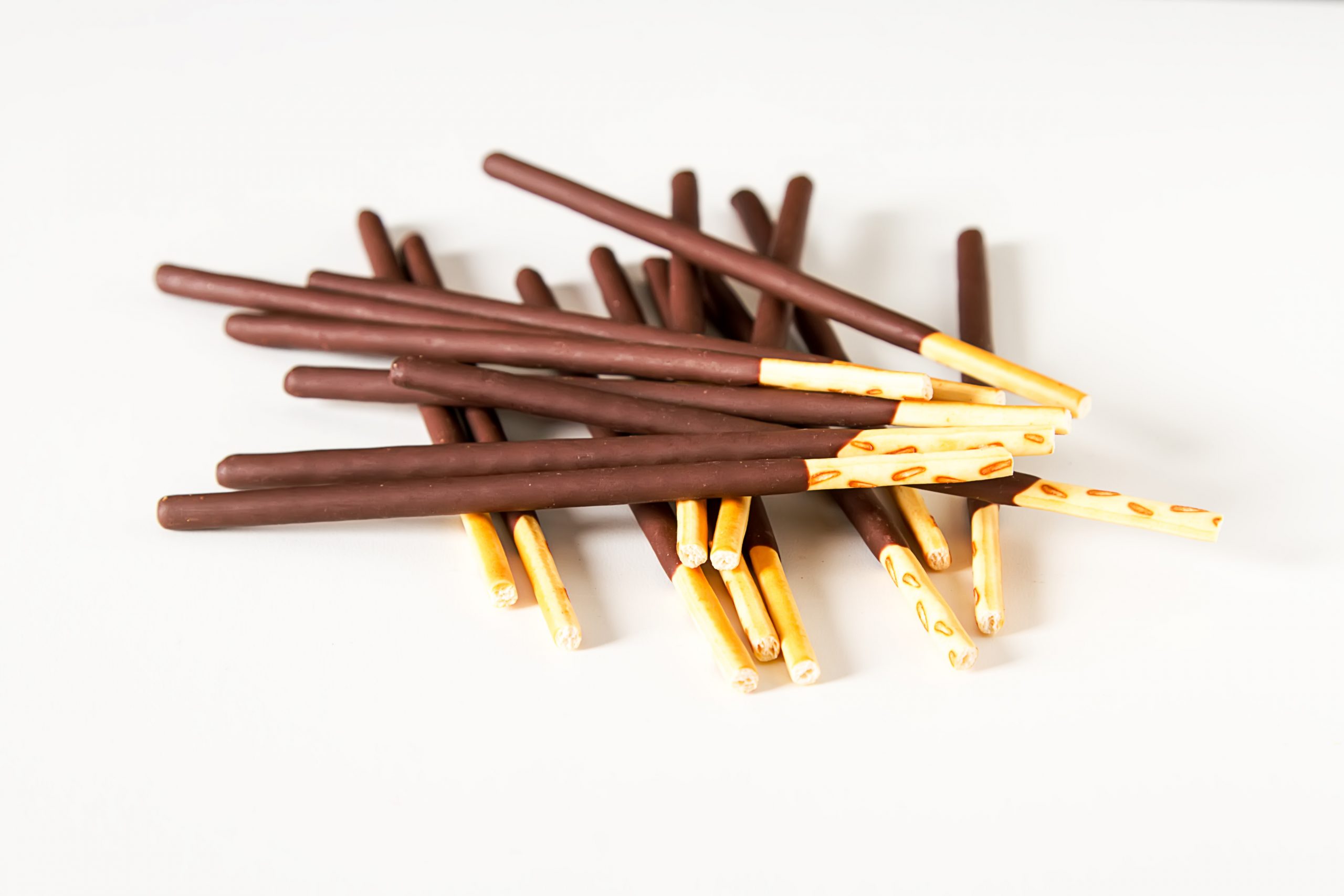“Ezaki Glico argued that ‘functional’ should be defined as ‘essential.’ The Third Circuit disagreed and noted that the Lanham Act and Supreme Court precedent supported defining functional as ‘useful.’”
 Last week, the United States Court of Appeals for the Third Circuit affirmed a decision of the district court that granted summary judgment to Lotte International America Corp. because Ezaki Glico’s cookie design was functional and not entitled to trade dress protection in Kaisha v. Lotte International America Corp. Noting that trade dress protection does not extend to functional or useful features, and there was no dispute that Pocky’s design was useful, the Third Circuit explained that the trade dress was invalid and “[t]hat’s the way the cookie crumbles.”
Last week, the United States Court of Appeals for the Third Circuit affirmed a decision of the district court that granted summary judgment to Lotte International America Corp. because Ezaki Glico’s cookie design was functional and not entitled to trade dress protection in Kaisha v. Lotte International America Corp. Noting that trade dress protection does not extend to functional or useful features, and there was no dispute that Pocky’s design was useful, the Third Circuit explained that the trade dress was invalid and “[t]hat’s the way the cookie crumbles.”
Pocky and Pepero
Ezaki Glico, a Japanese confectionery company, made and sold Pocky, i.e. “a product line of thin, stick-shaped cookies,” for half a century. Ezaki Glico started selling Pocky in the United States in 1978 and has registered U.S. trademarks, patents, and two product configurations as trade dresses.
In 1983, another confectionery company, Lotte, started making and selling similar stick-shaped cookies called Pepero. Between 1993 to 1995, Ezaki Glico notified Lotte of its registered trade dress and asked Lotte to cease and desist selling Pepero in the United States. Lotte responded and assured Ezaki Glico that it would stop until they resolved their dispute, but Lotte resumed selling Pepero. Ezaki Glico took no further action for twenty years. Then, in 2015, Ezaki Glico filed suit against Lotte in federal court for selling Pepero. The district court granted summary judgment for Lotte and held that Pocky’s product configuration was functional and not protected as trade dress. Ezaki Glico appealed to the Third Circuit.
‘Functional’ Means Useful
Reviewing the District Court’s grant of summary judgment de novo, the Court noted that the key issue was whether Pocky’s trade dress was functional. Citing Shire US Inc. v. Barr Labs., Inc., the Third Circuit explained that “[t]rade dress protection . . . is not intended to create patent-like rights in innovative aspects of product design” and the “functionality doctrine keeps trademarks from usurping the place of patents.”
Ezaki Glico argued that “functional” should be defined as “essential.” The Third Circuit disagreed and noted that the Lanham Act and Supreme Court precedent supported defining functional as “useful.” For example, the Third Circuit pointed out that the Supreme Court in TrafFix Devices, Inc. v. Mktg. Displays, Inc. “described functionality as depending on whether ‘the feature in question is shown as a useful part of the invention.’” The Third Circuit also explained that a “product’s design, including its shape, is often useful and thus functional,” such as the pillow-shape of Nabisco’s shredded wheat cereal.
Functionality of Pocky’s Trade Dress
The Third Circuit explained that the first of Ezaki Glico’s trade dresses claimed “an elongated rod comprising biscuit or the like, partially covered with chocolate” and the second was very similar but additionally claimed almonds on top of the chocolate or cream. The Third Circuit initially explained that Pocky’s design made it work better as a snack and Ezaki Glico promoted Pocky’s utilitarian advantages.
With respect to the design of Pocky, the Third Circuit noted that every feature of the trade dress registration related to the “practical functions of holding, eating, sharing, or packing the snack.” For example, the Third Circuit explained that the stick’s uncoated handle allows people to eat the snack without getting chocolate on their hands and the shape of the stick shape makes the snack easy to hold and allows people to eat it “without having to open their mouths wide.” Thus, the Third Circuit concluded that, when viewed as a whole, the claimed features of Pocky’s trade dress are “not arbitrary or ornamental flourishes that serve only to identify Ezaki Glico as the source,” bur rather, the design is useful and makes Pocky more appealing to consumers.
The opinion also noted that Ezaki Glico promoted Pocky’s utilitarian advantages by advertising its “convenient design” as having a “no mess handle” and concluded that Ezaki Glico ‘s promotions confirmed that Pocky’s design was functional.
The Court also explained that there are alternative designs for partly-chocolate-coated snacks, but that does not change the conclusion that “[E]very aspect of Pocky is useful.” It noted that Ezaki Glico’s utility patent for a manufacturing method is irrelevant for proving functionality because the features claimed in the utility patent do not overlap with its trade dress. In particular, the trade dress was directed to a stick shaped snack that is partly coated with chocolate or cream and the patent was directed to a method for making the snack’s stick shape. According to the Third Circuit, the patent’s mention of the stick shape says nothing about whether the shape is functional because the method would be used to make the shape regardless of whether the shape is functional or not. Thus, the district court erred in considering the utility patent, “but that error was immaterial” as “many other factors show that Pocky’s trade dress is functional and so invalid.”
Thus, in affirming the district court’s holding, the Third Circuit concluded that the design of Pocky was functional and the trade dress was invalid.

![[IPWatchdog Logo]](https://ipwatchdog.com/wp-content/themes/IPWatchdog%20-%202023/assets/images/temp/logo-small@2x.png)

![[Advertisement]](https://ipwatchdog.com/wp-content/uploads/2024/04/Patent-Litigation-Masters-2024-sidebar-early-bird-ends-Apr-21-last-chance-700x500-1.jpg)

![[Advertisement]](https://ipwatchdog.com/wp-content/uploads/2021/12/WEBINAR-336-x-280-px.png)
![[Advertisement]](https://ipwatchdog.com/wp-content/uploads/2021/12/2021-Patent-Practice-on-Demand-recorded-Feb-2021-336-x-280.jpg)
![[Advertisement]](https://ipwatchdog.com/wp-content/uploads/2021/12/Ad-4-The-Invent-Patent-System™.png)







Join the Discussion
No comments yet.